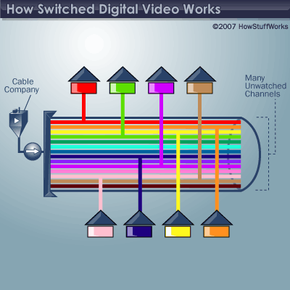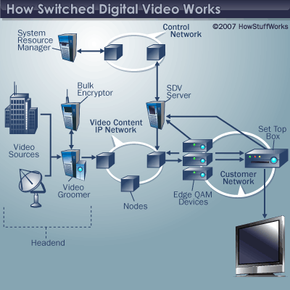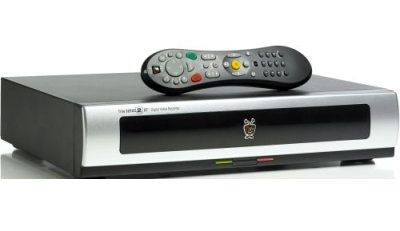Cable service providers are facing a troublesome obstacle. Consumer demand for bandwidth is approaching -- and in some cases exceeding -- network capacity. Many cable companies offer a wide range of services, including cable television programming, digital video and audio channels, high definition (HD) television channels, video on demand (VOD), cable modem Internet services and digital phone service. While coaxial and fiber-optic systems have a relatively large bandwidth capacity, service can suffer if too many customers are using it at the same time. Cable companies are considering several options to meet customer needs, including switched digital video (SDV).
To understand how SDV works, we'll first need a quick lesson on how cable companies traditionally provide service to customers. In older cable systems, the cable company broadcasts every channel in a single stream of programming to every section of its network all the time. When you use your set-top box (STB) to tune to a particular channel, the STB searches the stream for the channel's frequency and carries the signal to your television.
Advertisement
Because the cable company sends every channel through the entire network, there's not much spare bandwidth available for Internet service or digital video channels. High definition channels take up more bandwidth than normal digital video, so spare bandwidth decreases as cable companies add HD channels to their lineups. Because HDTVs have become more affordable and more households have acquired them, demand for HD programming has increased. Cable companies have to find ways to meet customer expectations, particularly in light of the fact that HD television providers already offer dozens of channels in HD format.
Switched digital video uses a different delivery system. Instead of combining all channels into one programming stream throughout the network, the cable company selects only the most popular channels for a network-wide stream. For less popular programming, the company responds to individual customer demands as the customer tunes in to that channel. In other words, the service provider sends only the channels customers are actually trying to watch. Because the system only sends customer-demanded channels, there's a lot of spare bandwidth left over for other services.
According to IneoQuest, a company that offers SDV solutions to cable companies, around 80 percent of all viewers in a given area are watching the same top 20 channels [source: Switched Digital Video Solutions]. Providing only the requested channel feeds would free up enough bandwidth for the cable company to:
- Increase the number of available channels in any given region, including HD video feeds
- Customize channel selection for different regions, including niche programming that might appeal to one segment of the company's customer base but not another
- Create more VOD content, giving users even more choices of what to watch
- Experiment with interactive television formats
- Target specific ads to individual markets, or even individual customers
- Allow cable modem customers to download content at a much higher rate
In this article, we'll examine the architecture and equipment used in an SDV system, and we'll learn about the potential advantages and disadvantages of SDV. We'll also look at some companies and markets that are already using SDV.
In the next section, we'll learn how the SDV system connects the cable provider to the customer.
Advertisement




